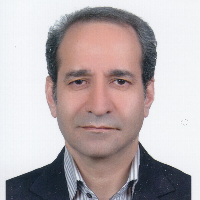Constructing and Validating an EFL Hidden Curriculum Scale Using the Rasch Model
Author(s):
Article Type:
Research/Original Article (دارای رتبه معتبر)
Abstract:
Whether acknowledged or neglected by educators, the hidden curriculum is present in every institute. Therefore, studying the hidden curriculum is essential to understand how it functions within an English language institute’s setting and among those within it. The purpose of this study was to design and validate a scale to measure language teachers’ perspectives on English as a Foreign Language (EFL) hidden curriculum by the application of the Rasch model. The review of the literature indicated the lack of sufficient research on the investigation of EFL hidden curriculum components in the view of EFL teachers. To fill the existing gap in the literature, a 40-item questionnaire was devised and validated, then 164 Iranian EFL teachers, teaching at different language institutes were asked to reply to the questionnaire. In this study, hidden curriculum components were based on Saylor, Alexander, and Lewis’ (1981) perspectives. Accordingly, items were classified into three different constructs, namely the social atmosphere (including 15 items), the organizational structure of the English Language Institute (consisting of 14 items), and the interaction between teachers and learners (including 11 items). The results showed that the questionnaire items fitted the Rasch model after removing six items from the scale. Moreover, it was confirmed that the scale enjoyed suitable reliability. This proposes that the questionnaire is potentially valid and can be used as a measure of EFL hidden curriculum. One of the study implications is that the questionnaire designed and validated in this study can be used as a research tool in future research to assist policymakers and material designers, institutions’ administrators, and language teachers to be considered for future decision making, and designing materials. It also can be used as a research tool to measure the relationship between EFL hidden curriculum and other variables in future research.
Keywords:
Language:
English
Published:
Applied Research on English Language, Volume:10 Issue: 1, Jan 2021
Pages:
1 to 32
https://www.magiran.com/p2258355
سامانه نویسندگان
مقالات دیگری از این نویسنده (گان)
-
Learner-Centered Assessment at Iranian Universities: EFL Students' Attitudes
Samaneh Zolfaghari, *, Hossein Khodabakhshzadeh, Gholamreza Zareian
International Journal of Language Testing, Oct 2023 -
Inter- Relationship between Iranian Intermediate EFL Learners’ Intrinsic Motivation, their Willingness to Communicate and their Level of Depression: A Case of Khorasan Razavi
Haniyeh Afzali *,
Journal of Applied Linguistics Studies, Summer and Autumn 2022 -
Hidden Curriculum Components, Learners’ National Identity, and Self-Efficacy: A Model for Iranian EFL Teachers
Zeinab Sazegar, *, Khalil Motallebzadeh
Issues in Language Teaching Journal, Summer and Autumn 2021 -
Professional Success among Iranian University Professors of TEFL: A study on the Basis of Goffman's Footing Theory
Khalil Motallebzadeh, Hanieh Garmabi *, Mehri Bakhtiari Fayendari
Journal of English Language Pedagogy and Practice, Spring - Summer 2018


